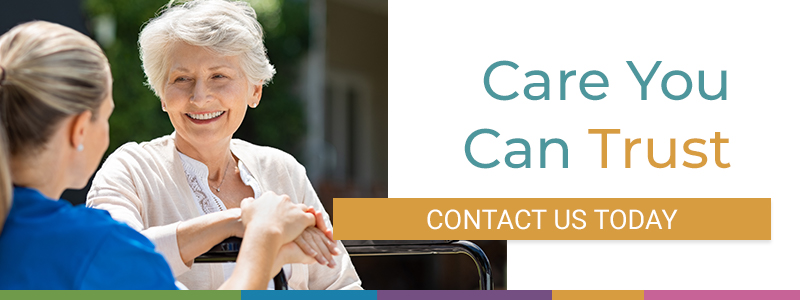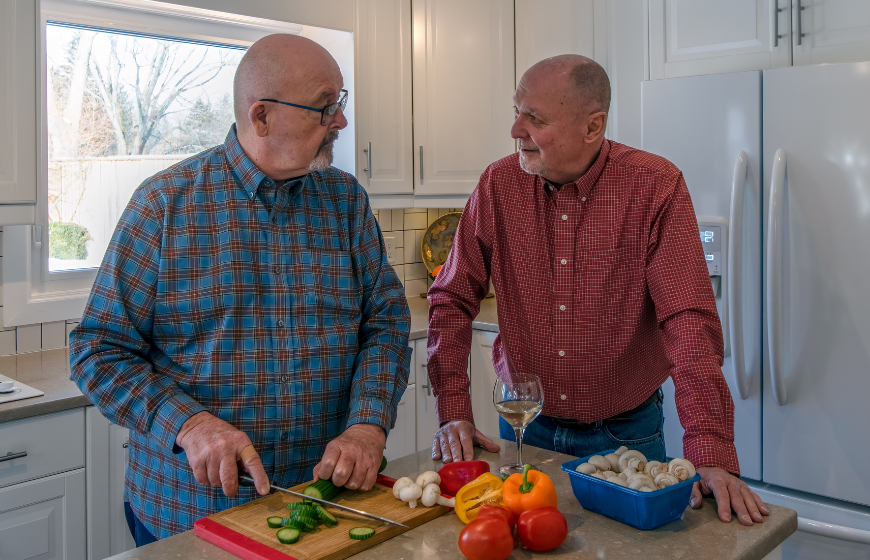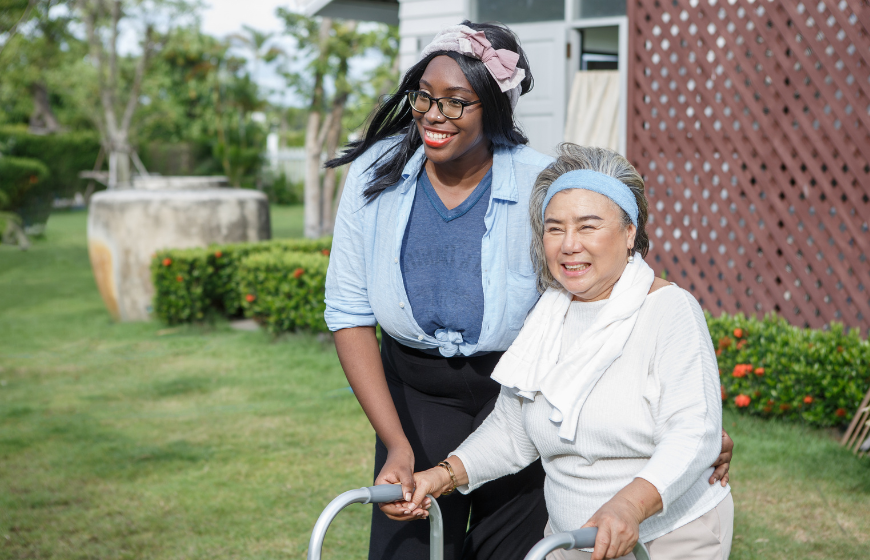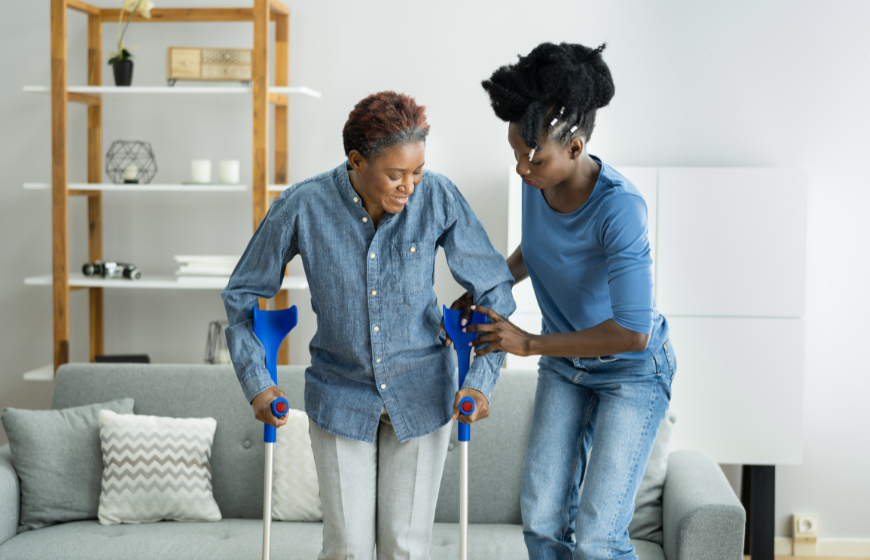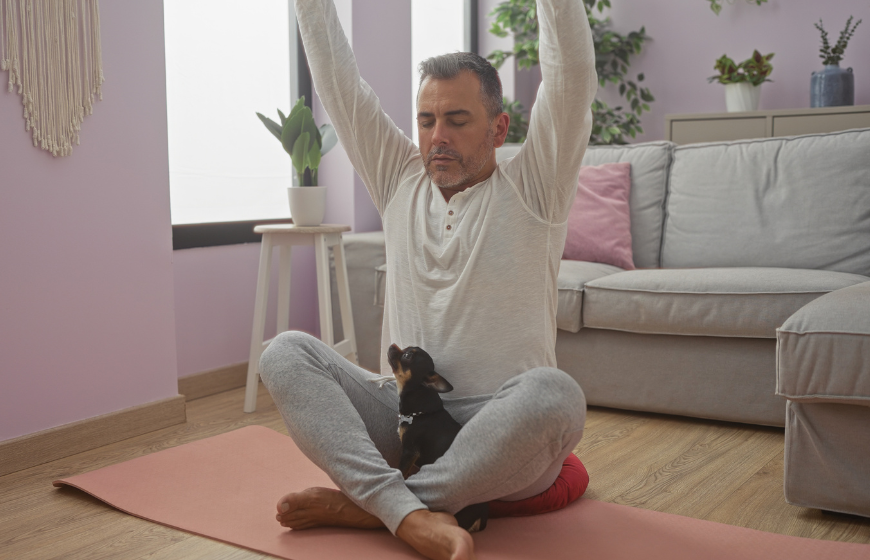Caregivers of aging adults often have aching shoulders, strained muscles, or sore backs from helping them stand up, move from room to room, lower down into a wheelchair, or get into a vehicle. In some cases, these transfers can result in an injury.
Lifting a patient’s body from one place to another is not an easy task, and it can put immense strain on your own body. Helping someone get up, move around, or change positions is a crucial part of caregiving, but without proper safe transfer techniques, it can be unsafe for you and the person you’re caring for.
Here at Alliance Homecare, we’re dedicated to providing families with the information and support they need to care for their loved ones as they age. We know first hand how physically demanding and strenuous caregiving can be, and we’re here to guide you in completing transfers as safely as possible.
Safe Methods of Transferring a Senior
Ideally, a trained and qualified healthcare professional, such as home health aide services from Alliance, would be there for all your transferring needs. However, it’s important to learn the proper techniques in case professional assistance isn’t always there.
If you ever feel like lifting someone might be dangerous for either of you, it’s best to play it safe and call for help in order to avoid serious injury to you or a loved one. That being said, the following tips can help you maintain proper form when transferring a senior.
Lift with Your Legs
Like lifting a heavy box or furniture, you’ll want to make sure to always lift with your legs, not your back. Your leg muscles are larger and generally more powerful than those in your back. When you don’t use this proper lifting technique of lifting with your legs, it can create serious strain in your back and potentially lead to a pulled muscle.
Lead with a Squatting Position
Along the same lines, leading with a squatting position can help ensure transferring doesn’t result in an injury. Standing with your feet hip-width apart, bending at your knees, and tilt slightly forward at your hips. Squat down while keeping your back straight and your feet planted firmly on the floor. Then use your leg muscles to stand back up.
Depending on the situation, you may also want to place one foot in front of the other slightly. This will help you stay balanced when lifting from more awkward angles.
Engage Your Abs
Engaging your abs is also essential in preventing strained muscles and caregiver injury when transferring an aging adult. Make sure to keep your abs tight and your back straight. Like lifting with your legs, this helps protect the smaller, weaker muscles in your back.
Count Out Loud Before Lifting
Though you’ll be doing the brunt of the work, transferring is a joint effort. That’s why we recommend counting to three out loud before lifting your loved one. This gives you a moment to build momentum and ensures they’re ready for you to lift.
Stay Close
It’s much easier to lift something (or someone) when it’s close to your body. When transferring a senior, keep them as close as possible. With their weight centered on your body, lifting them won’t require as much effort, and you’ll minimize your overall exertion.
Take Your Time
Lastly, we encourage you to take your time when lifting a loved one. If the transfer isn’t urgent, and going too fast can result in unnecessary soreness or injury for either of you.
Basic Transferring Scenarios
When moving, lifting, or adjusting an aging adult, remembering to use proper form can make the process safer. That said, different transfers call for different techniques. The most common scenarios involve helping someone stand up, sit up, and sit down. Here’s how you can make these transfers as safe as possible.
Standing Up
If your loved one needs help getting out of bed, up off the couch, or out of a car, you can use a specific transferring technique to get them in a standing position. While facing them, start by putting their hands on your shoulders.
With your knees slightly bent and your feet shoulder-width apart, wrap your arms around their back and clasp your hands firmly together. Lean into their body, and hold them close, almost like a hug. Then shift your weight back and stand up while lifting them into a standing position.
Sitting Up
Another common transferring scenario is helping someone sit up in bed. Since this usually implies they don’t have the strength to push up with their hands, you’ll need to place one arm under their back and the other under their legs.
Once your arms are in position, remember to use a squatting technique. Keep your feet hip-width apart and slightly staggered, tilt slightly forward while keeping your back straight, and lift with your legs while adjusting your loved one into a sitting position.
Sitting Down
When helping someone go from standing to sitting in a chair, couch, or wheelchair, start by positioning their back toward the chair. If possible, place their hands on the arms of the chair.
Similar to a standing up transfer, you’ll wrap your arms around them and clasp your hands together. Lean into their body with your knees bent and slowly lower them into a seated position.
Safety First
When a loved one is in need, it’s natural to want to try to help them in any way you can. Nevertheless, it should never be at the cost of putting yourself in danger. Plan ahead, go slow, be extra careful, and use your best judgment when assessing a patient transfer’s safety.
Watching videos of proper transferring techniques for caregivers can help you get an idea of the correct form. You might also be able to get training from a professional. If possible, it could be worth practicing on a partner a few times to get accustomed to various scenarios before transferring a senior.
At-Home Self-Care Assistance in the New York City Metro Area
Many aging adults want to continue living in their homes for as long as possible. At Alliance Homecare, we agree there’s no place like home, and we’re here to help ensure that the benefits of home care can happen in a safe, comfortable, and healthy environment. Whether it is techniques in improving memory for seniors, medication management tips for seniors, or incorporating heart healthy foods for seniors, we have all the resources to help aging adults.
Our comprehensive in-home care includes a variety of services. We can provide in-home nurse care, post-surgical support, chronic care management, palliative end-of-life care, and non-medical care to assist with ADLs (activities of daily living).
The skilled caregivers at Alliance have the training and experience to perform safe transfers. We’re available 24 hours a day, seven days a week, and can be there on a regular schedule or fill in with respite care when you need a break.
Contact us today to arrange for home care in the New York City metro area.
External sources:
- https://orthoinfo.aaos.org/en/staying-healthy/lifting-techniques-for-home-caregivers
- https://pubmed.ncbi.nlm.nih.gov/22556286/
- https://www.cdss.ca.gov/agedblinddisabled/res/VPTC2/5%20Injury%20and%20Fall%20Prevention/Positioning_Moving_Transfers.pdf
- https://www.unmc.edu/patient-safety/_documents/safe-transfers-mobility-handout.pdf
- https://www.researchgate.net/publication/235424424_Caregiver_Injury_and_Safe_Patient_Handling
- https://www.researchgate.net/publication/318060355_DETECTING_IMPROPER_TRANSFER_TECHNIQUES_TO_REDUCE_CAREGIVER_INJURIES
